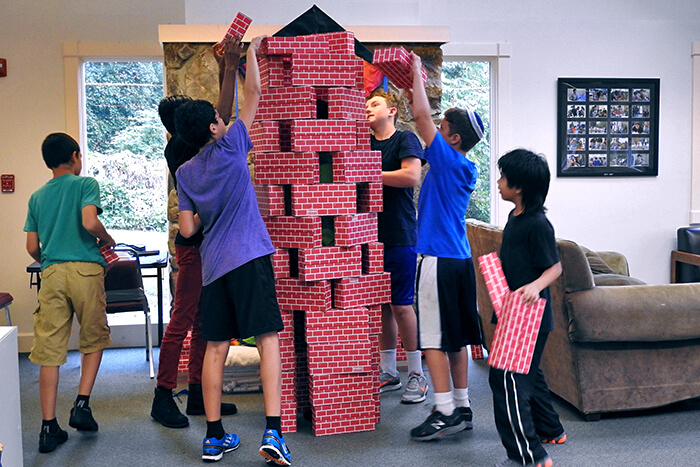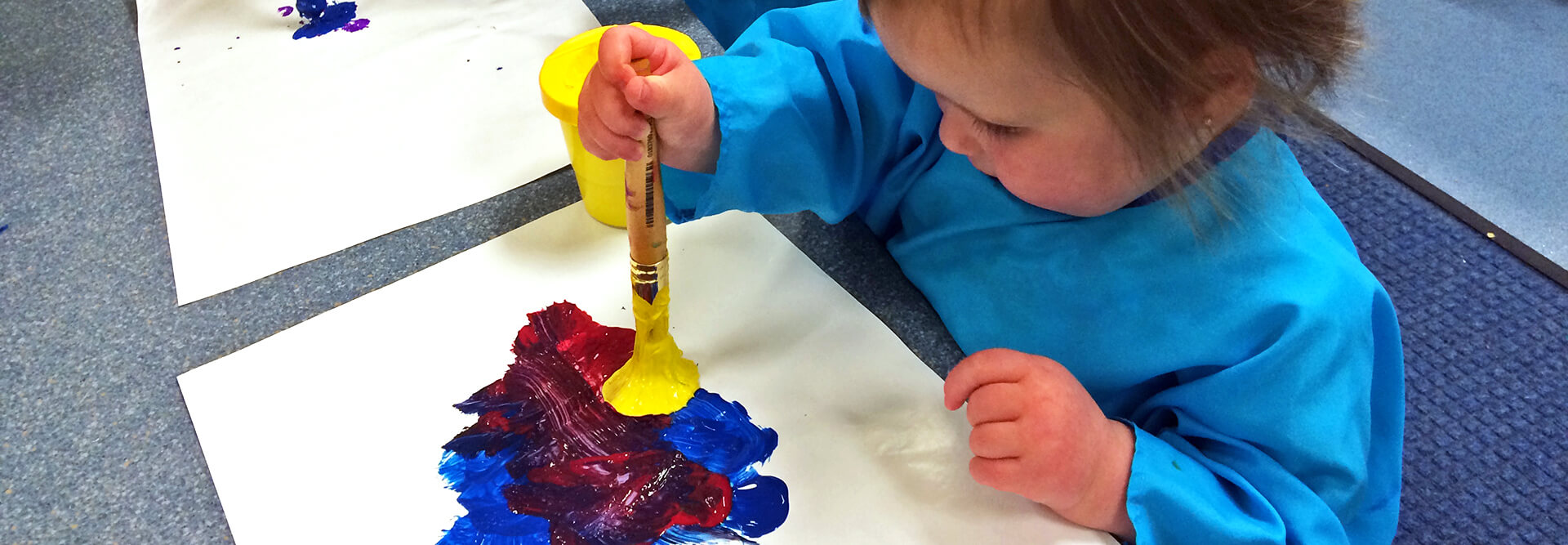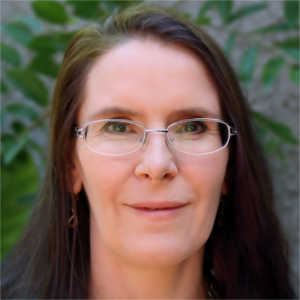It was a mild and sunny winter’s day at the temporary campus of Riverstone Village in Johannesburg, South Africa.
A group of adults had just been going over some staff-training notes, discussing how ‘product’ is the focus for conventional education, while ‘process’ is the key for SDE.
We used an example from the art room: how the process might be, for example, learning how to paint. The product would be a completed painting. Process might be ‘mixing paint’, and product might be ‘a bunny painted in shades of blue acrylic.’
While conventional education generally demands a product in order to evaluate it, Self-Directed Education often involves pure process without any sign of product at all.

Left to their true inner guidance, young artists often spend time simply exploring materials. They may just mix paint, and mix paint, and mix paint. Or explore the way different brushes or pressures leave different marks. They may start out creating quite a promising product, and then ‘destroy’ it during the process of experimentation.
The danger in pushing learners to ‘complete’ what they start, document or ‘integrate’ their learning ‘projects’, is that it can derail their self-direction and teach them to bend their inner urges to an extrinsically motivated goal. Allowing themselves only a small chance to explore, they must curtail the journey and meet a demand to produce.
Ironically this ultimately results in inferior product – because process builds the foundations: the understanding and skills that generate the product. Without deep foundations, the product is, most often, mediocre.
Yes, product is valuable as evidence of meta-skills processes such as planning, perseverance, mastery, etc. However, even here, product in itself is very seldom necessary. We value these processes even when they do not lead to product. A child who plans but does not execute has nonetheless explored planning – and maybe that is all they need from today.
Only at the very last stages of learning, and in the peri-adult years, does product begin to have inherent value. And only then can we see whether the producer might sell paintings of bunnies – or tins of innovative paint mix!
So, all of this we discussed, getting to grips with what we, in a Sudbury-inspired SDE facility, mean by ‘learning’.
But all of it was theory. Then, right on time just as if we had arranged it, two parents gave us a perfect real-life example.

Parent 1 locked her keys in her car.
I ran to tell a group of kids busy with tying up a volunteer staff member who plays stunting games with them, pretty sure they would all want to be involved in getting the key issue sorted.
After all, we joked, this is Johannesburg, South Africa. If you’re learning to tie people up, then isn’t breaking into cars also part of that curriculum?
Sure enough, they tackled the job with glee. Wire, string, tape and sticks were deployed, and the lack of a good strong magnet, lamented.
Wonderful group problem solving got underway, with a great sense of team solidarity and lots of individual initiative and collaborative creativity.
That’s when Parent 2 arrived in the parking area.
Parent 2 took one look at this wonderful process-oriented life-learning game, and simply knew that he was needed in order to achieve the product – getting the keys out of the car.
Parent 2 promptly sourced a much stronger bit of wire and got to work. Unfortunately it was too bent for his particular car-hack plan.
The staff member tried to straighten it for him, and couldn’t. Parent 2 tried to straighten it, and couldn’t.
One of the younger collaborators had an idea that might straighten it – but Parent 2 refused to let him try. Adding insult to injury, Parent 2 lectured him on the ‘fact’ that it wouldn’t work and why, and demanded that he accept that in place of direct experience.
That’s when I was summoned.
This is our space, I was told. It’s our campus. This is where we get to learn and try and experiment and do stuff, and no stranger who doesn’t even belong here gets to come and boss us around and tell us what we can and can’t do, and get to do all the cool stuff and not let us even have a turn. And anyway, our Agreement number 9 states that when a game is already in progress and someone wants to join in, the players get to decide whether or not they can manage to include that person and on what terms. Parent 2 wasn’t even invited! He just muscled in, and anyway, he’s distracting us!
The divide in values was clear – the community members valued their process. They knew there was always something to learn from direct experience – even with failure pretty much guaranteed. The young person knew he probably wouldn’t be able to straighten the wire, but he wanted to find out – for sure, for himself.
I was asked to have a diplomatic word with Parent 2.
Well, you’re probably thinking that I’m going to tell you now that the young person straightened the wire. But this is Riverstone Village, not Hollywood, so, no. He didn’t. But, given his chance to try, he was satisfied.
The group even allowed Parent 2 to keep playing, given that in this case, product was also important.
A few minutes later one of the younger collaborators popped the lock with a plan of his own – without in any way using Parent 2, his wire, or his methods – but just a bit of help from one other willing collaborator.
The man who focused on product, and on competing to be the only one who ‘mattered’, got nowhere, and wasn’t as key to the product as he thought. In the end, he was, indeed, just a well-intentioned distraction and a source of discord. His goal-oriented product was inferior to the one born of playful process.
The group that focused on process and collaborative play had a wonderful time learning many different lessons and bonding with each other, too. The victory of one was a victory for all.
All of that said, without Parent 2, we wouldn’t have had such a wonderful lesson to chew on. Such a wonderful chance to further define our thinking and our boundaries.
In the end, the whole, entire process was far more valuable than if we’d had a full-marks ‘product’ like a spare key for the car.

If you enjoyed this article and feel called to give back to ASDE, here are ways you can support our work:
- Donate money
- Share our content with others! Click one of the buttons above to easily share on Twitter, Facebook, or email.
- Consider becoming a Contributor for Tipping Points
Tipping Points Magazine amplifies the diverse voices within the Self-Directed Education movement. The views expressed in our content belong solely to the author(s). The Alliance for Self-Directed Education disclaims responsibility for any interpretation or application of the information provided. Engage in dialogue by reaching out to the author(s) directly.






